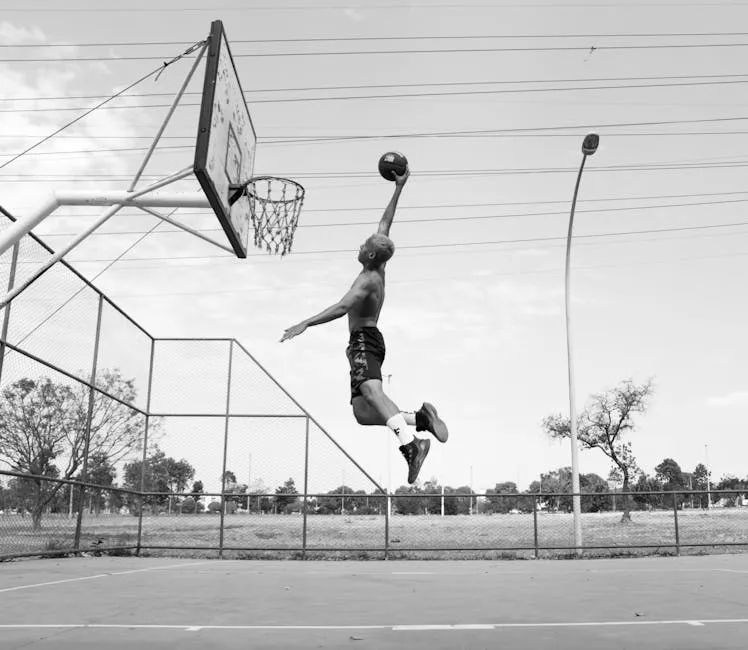Introduction
Welcome to the vibrant world of SEC basketball! The Southeastern Conference (SEC) is a heavyweight in college sports, renowned for its thrilling games, passionate fan base, and a legacy of producing NBA stars. If you’ve ever wondered why SEC basketball gets fans on their feet, it’s because the competition is fierce and the stakes are high. Each season, schools like Kentucky, Tennessee, and Alabama battle it out for supremacy on the court, making every game a nail-biter.
Understanding SEC basketball statistics is crucial for fans, analysts, and teams alike. Why? Because statistics offer insights that can shape game strategies, enhance player evaluations, and ultimately influence outcomes. Whether you’re a die-hard fan or a casual observer, knowing how to interpret these numbers can deepen your appreciation for the game.
In this article, we’ll break down the essentials of SEC basketball statistics, including what they are, their significance, and the different types you’ll encounter. Expect a friendly, witty exploration of everything from points per game to advanced metrics. By the end, you’ll be equipped with the knowledge to impress your friends at the next game-watching party!

Understanding SEC Basketball Statistics
What Are Basketball Statistics?
Basketball statistics are numerical representations of player and team performance. They aim to quantify what happens on the court, turning the chaos of basketball into digestible data. At their core, these stats help us understand the game better, revealing patterns and trends that might otherwise go unnoticed.
There are several types of statistics you should be aware of. Individual statistics focus on single-player performances, showcasing metrics like points scored, assists made, and rebounds grabbed. These numbers tell us how well a player is performing and can guide team strategies during games.
Team statistics, on the other hand, provide a broader view of how a team functions as a unit. Metrics such as points per game, shooting percentages, and defensive efficiency reveal how effectively a team operates. These stats can be invaluable when analyzing team performance over the season.
Finally, advanced metrics offer deeper insights into the game. Think of them as the secret sauce that enhances our understanding of player contributions. Metrics like Player Efficiency Rating (PER) and Win Shares go beyond traditional stats, helping analysts gauge a player’s overall impact on the court.
In a nutshell, basketball statistics transform the game into a numbers game, making it easier to appreciate the nuances of SEC basketball. And if you’re looking to dive deeper into the world of basketball stats, check out Basketball for Dummies—a perfect guide for beginners!

Importance of Statistics in Basketball
Basketball is more than just a game of hops and dribbles. It’s a tactical showdown where numbers reign supreme. Statistics are the secret sauce that flavors every play, guiding coaches in their strategic decisions. Want to know why one team seems to dominate another? Check the stats! They unveil patterns and trends that otherwise remain hidden.
Statistics also play a crucial role in player evaluations. Coaches use them to assess a player’s strengths and weaknesses. Is that rookie a future star? The numbers might say yes—or no. This data-driven approach helps teams make informed decisions about trades, drafts, and game-time strategies.
In the modern game, data analytics have taken center stage. Coaches and analysts harness advanced statistics to dissect performances. Metrics like Player Efficiency Rating (PER) and Win Shares offer deeper insights into individual contributions. These numbers help teams optimize their lineups and exploit opponent weaknesses. In short, statistics shape the game at every level. If you want to dive deeper into basketball analytics, consider picking up Basketball Analytics: Spatial Tracking!

Overview of SEC Men’s Basketball Statistics
Historical Context
The Southeastern Conference (SEC) has a rich basketball history. Founded in 1932, it has evolved into a powerhouse in college basketball. Over the decades, SEC teams have claimed numerous NCAA championships, showcasing their competitive spirit and talent. Schools like Kentucky and Florida have solidified their legacies with multiple national titles, making them household names in the basketball community.
SEC teams have also produced a plethora of NBA stars. From Anthony Davis to Kevin Durant, the conference has been a breeding ground for talent. Its history is filled with memorable moments, from buzzer-beaters to championship runs. Understanding this context enriches the appreciation of current SEC basketball statistics. If you’re interested in the evolution of the game, check out Basketball: A History of the Game for a detailed look!

Key Statistics Categories
Team Statistics
When it comes to team performance, statistics are vital. Metrics like points per game (PPG), rebounds, and assists paint a clear picture of a team’s capabilities. For instance, a high PPG indicates a potent offense, while strong rebounding numbers reveal dominance in the paint.
Team statistics help analysts gauge overall performance. A team’s shooting percentage, for instance, can tell you if they’re efficient or struggling to find the basket. Moreover, these statistics provide insights into a team’s style of play. Are they a fast-paced squad that relies on quick transitions? Or do they prefer a slower, more methodical approach? If you’re looking to improve your game, consider investing in Basketball Fundamentals on DVD, which offers great insights!
Through these numbers, fans can better understand their favorite teams’ strengths and weaknesses. Whether it’s the SEC Tournament or the NCAA March Madness, following these stats adds excitement to the game. After all, nothing beats the thrill of watching your team perform well, backed by solid statistics!

Player Statistics
When we talk about player statistics in SEC basketball, we’re diving into the nitty-gritty of individual performance metrics. These numbers tell a story—one that reveals who’s making the game-winning shots, who’s grabbing those crucial rebounds, and who’s racking up assists like they’re going out of style.
At the heart of player stats are points, assists, and rebounds. Points per game (PPG) is the gold standard. It’s what every player dreams to lead in. For instance, this season, Dalton Knecht from Tennessee has been lighting up the scoreboard, averaging an impressive 21.7 points per game. His scoring prowess is complemented by his ability to dish out assists, averaging 4.0 per game, making him a double threat on the court.
Rebounds are another telling metric. They reflect a player’s ability to control the game. A solid rebounding average can mean the difference between winning and losing. Players like Ven-Allen Lubin have been key to their teams, pulling down 10 rebounds per game.
But why are these statistics important in scouting and recruitment? Well, stats serve as a window into a player’s potential. Coaches and scouts rely on these metrics to evaluate talent and fit for their programs. A player with a high assist-to-turnover ratio, for example, shows not just scoring ability but also playmaking skills. This is crucial for teams looking to build a cohesive unit, especially in a conference like the SEC, where competition is steep.
Moreover, these metrics help in projecting a player’s future impact on a team. A solid performance in individual statistics can catch the eyes of recruiters, leading to scholarship offers and opportunities at higher levels. In a nutshell, player statistics are the lifeblood of recruitment strategies in SEC basketball, helping teams find their next star. And if you’re curious about the best drills to develop these skills, don’t miss 100 Basketball Drills—a must-have for any serious player!
In the 2023-24 season, the competition is fiercer than ever. Fans can expect thrilling performances as players battle it out, showcasing their skills and stats. Keep an eye on those numbers; they might just reveal the next big thing in SEC basketball!

Advanced Metrics
In the world of basketball, advanced metrics are like the secret sauce that adds flavor to the game. They go beyond traditional stats, giving us a glimpse into a player’s true impact on the court. One popular metric is the Player Efficiency Rating (PER). It condenses a player’s contributions into a single number. The higher the PER, the better the player is at impacting the game. Think of it as a player’s GPA, but for basketball.
Another key metric is Win Shares. This statistic estimates the number of wins a player contributes to their team. It’s as if you’re assigning credit to players for their hard work. A player with high Win Shares isn’t just scoring points; they’re making a difference in the overall success of the team. These metrics provide deeper insights into player contributions, allowing fans and analysts alike to appreciate the nuances of the game better. If you want to explore more about these advanced metrics, grab a copy of Basketball Analytics: Spatial Tracking!

Trends and Insights from SEC Basketball Statistics
Emerging Trends
This season, SEC basketball is buzzing with trends that are reshaping the game. One standout observation is the growing influence of three-point shooting. Teams are jacking up threes like there’s no tomorrow. This change in strategy isn’t just for show; it’s altering game outcomes. Teams that excel in three-point shooting are often at the top of the conference standings.
Fast pace is another trend making waves. Teams are pushing the ball up the court, looking to score before the defense can set. This speedy style results in more possessions and, you guessed it, more scoring opportunities. As a result, fans are treated to heart-pounding action and high-scoring games. In the SEC, the combination of three-point shooting and pace of play is making each game an exhilarating spectacle. If you’re a fan of the game, don’t forget to check out NBA 2K24—the game that lets you experience the action firsthand!

Historical Comparisons
To understand the current landscape of SEC basketball, we must look back. Comparing this season’s statistics with historical data reveals intriguing patterns. For instance, the emphasis on three-point shooting has skyrocketed. In previous seasons, teams relied more on post play and mid-range shots. Now, those long-range bombs are the go-to strategy.
Moreover, the style of play has changed dramatically. Today’s teams are more analytical, leveraging advanced metrics to inform game strategies. Coaches are becoming data-driven decision-makers. They analyze player efficiency and matchups meticulously, allowing them to fine-tune their game plans. This analytical approach not only enhances team performance but also creates a more dynamic viewing experience for fans.
In conclusion, the trends we see today reflect a significant evolution in SEC basketball. The mix of emerging strategies and historical context enhances our understanding of the game. As we continue to follow these developments, it will be fascinating to see how they shape the future of SEC basketball. If you’re interested in coaching strategies, pick up a copy of The Complete Guide to Coaching Basketball.

Conclusion
Understanding SEC basketball statistics is essential for fans and analysts alike. So why does it matter? Well, statistics are the pulse of the game. They provide a clear picture of player performance and team dynamics, turning the chaos of basketball into something more digestible. For fans, knowing these numbers can deepen their appreciation for the game. A casual fan can transform into a savvy analyst with just a bit of statistical know-how.
As we look toward the future, the role of data analytics in SEC basketball is expected to grow. Teams are increasingly relying on advanced metrics to make strategic decisions. Coaches are using data to fine-tune their game plans, ensuring they capitalize on every advantage. In the world of college basketball, where every win counts, data-driven insights are more crucial than ever.
The future promises exciting developments in how we analyze the game. With technology advancing, we can expect more sophisticated metrics that will provide deeper insights into player and team performance. As teams adapt, fans should stay tuned. The stats are like a live feed of the action, providing updates on player progress and team performance. And if you want to keep track of your favorite games, consider getting a Rawlings Basketball Scorebook!
So, as the season progresses, keep your eye on the stats. They can reveal trends, highlight standout players, and inform discussions about team strategies. Whether you’re cheering for your favorite team or analyzing matchups, understanding SEC basketball statistics will elevate your experience. Who knows? You might even become the stat guru among your friends!

FAQs
What are the most important statistics to follow in SEC basketball?
When it comes to SEC basketball, several key statistics are vital for understanding team and player performance. Points per game (PPG) tops the list. It shows how effectively a team can score. Rebounds are another crucial metric. They indicate who’s dominating the boards and gaining possession. Assists are equally important; they reflect teamwork and playmaking ability. Shooting percentages—both field goal percentage (FG%) and three-point percentage (3P%)—also provide insights into a team’s efficiency. A high FG% means good shot selection, while a sharp 3P% can stretch defenses and open up the court. Free throw percentage (FT%) is another valuable stat, especially in close games where every point counts. Tracking these metrics gives fans a comprehensive view of team dynamics.
How do SEC teams compare to other conferences in terms of statistics?
SEC teams are often at the forefront of NCAA basketball, and their statistics reflect this. When compared to other major conferences like the ACC and Big Ten, SEC teams frequently showcase impressive offensive and defensive metrics. For instance, teams like Alabama and Kentucky consistently rank high in points per game and shooting efficiency. Moreover, the SEC’s physical style of play often leads to favorable rebounding statistics. This conference is known for producing high-caliber talent, which translates into competitive statistics across the board. While each conference has its strengths, the SEC remains a powerhouse, consistently competing at a high level.
Where can I find the latest SEC basketball statistics?
For up-to-date SEC basketball statistics, several reliable resources are available. The official SEC website is a great starting point. It features comprehensive stats and rankings for teams and players. ESPN also provides detailed player statistics, including points, rebounds, and assists, updated regularly during the season. Additionally, sites like Sports Reference and KenPom offer advanced metrics and analysis. These platforms dive deep into player efficiency ratings and other advanced stats that can provide valuable insights. Fans should bookmark these sites to keep track of the latest developments throughout the season.
How do statistics influence player recruitment and team strategy?
Statistics play a pivotal role in both player recruitment and team strategy. Coaches rely heavily on statistical analysis to evaluate potential recruits. A player’s performance metrics can reveal their strengths and weaknesses. For instance, a high assist-to-turnover ratio often indicates a smart playmaker, making them a prime target for recruitment. Moreover, teams utilize statistics to formulate game strategies. Analyzing opponent stats can highlight weaknesses to exploit during games. If a team struggles against three-point shooters, it might prompt a strategy focused on perimeter scoring. Thus, statistics are not just numbers; they are essential tools in shaping a team’s future.
What are advanced statistics, and why are they important?
Advanced statistics have become crucial in modern basketball analysis. Unlike traditional metrics, they provide deeper insights into a player’s impact on the game. For example, Player Efficiency Rating (PER) combines various stats into a single number that reflects a player’s overall performance. Win Shares is another important metric, estimating the number of wins a player contributes to their team. These advanced stats help coaches and analysts understand a player’s true value beyond basic numbers. As the game continues to evolve, these metrics will only grow in significance, offering a clearer view of player contributions and team dynamics.
Please let us know what you think about our content by leaving a comment down below!
Thank you for reading till here 🙂
For a deeper understanding of the significance of basketball statistics, check out this comprehensive guide on basketball statistics.
All images from Pexels




